
How to Use MQ-4: Examples, Pinouts, and Specs
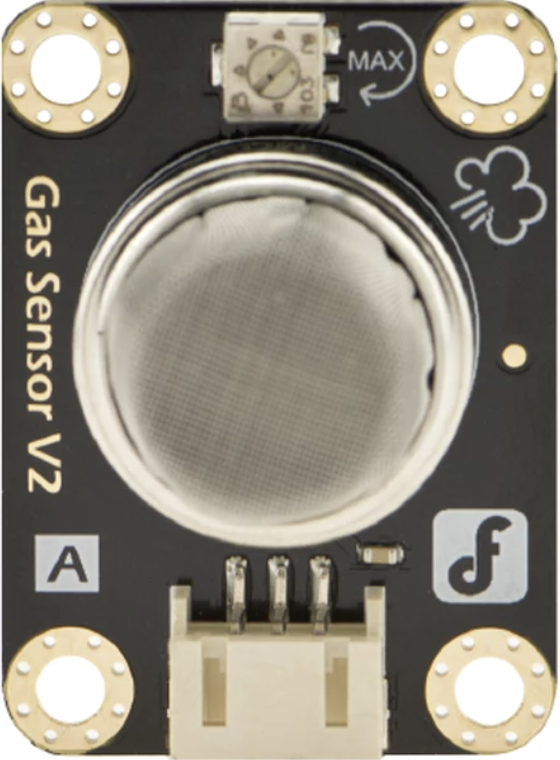
 Design with MQ-4 in Cirkit Designer
Design with MQ-4 in Cirkit DesignerIntroduction
The MQ-4 gas sensor, manufactured by DF Robot, is a highly sensitive and reliable component designed to detect methane (CH₄) and natural gas concentrations in the air. It operates on the principle of resistive change, where the sensor's resistance varies in response to the presence of target gases. The MQ-4 provides an analog output signal proportional to the gas concentration, making it suitable for a wide range of applications.
Explore Projects Built with MQ-4
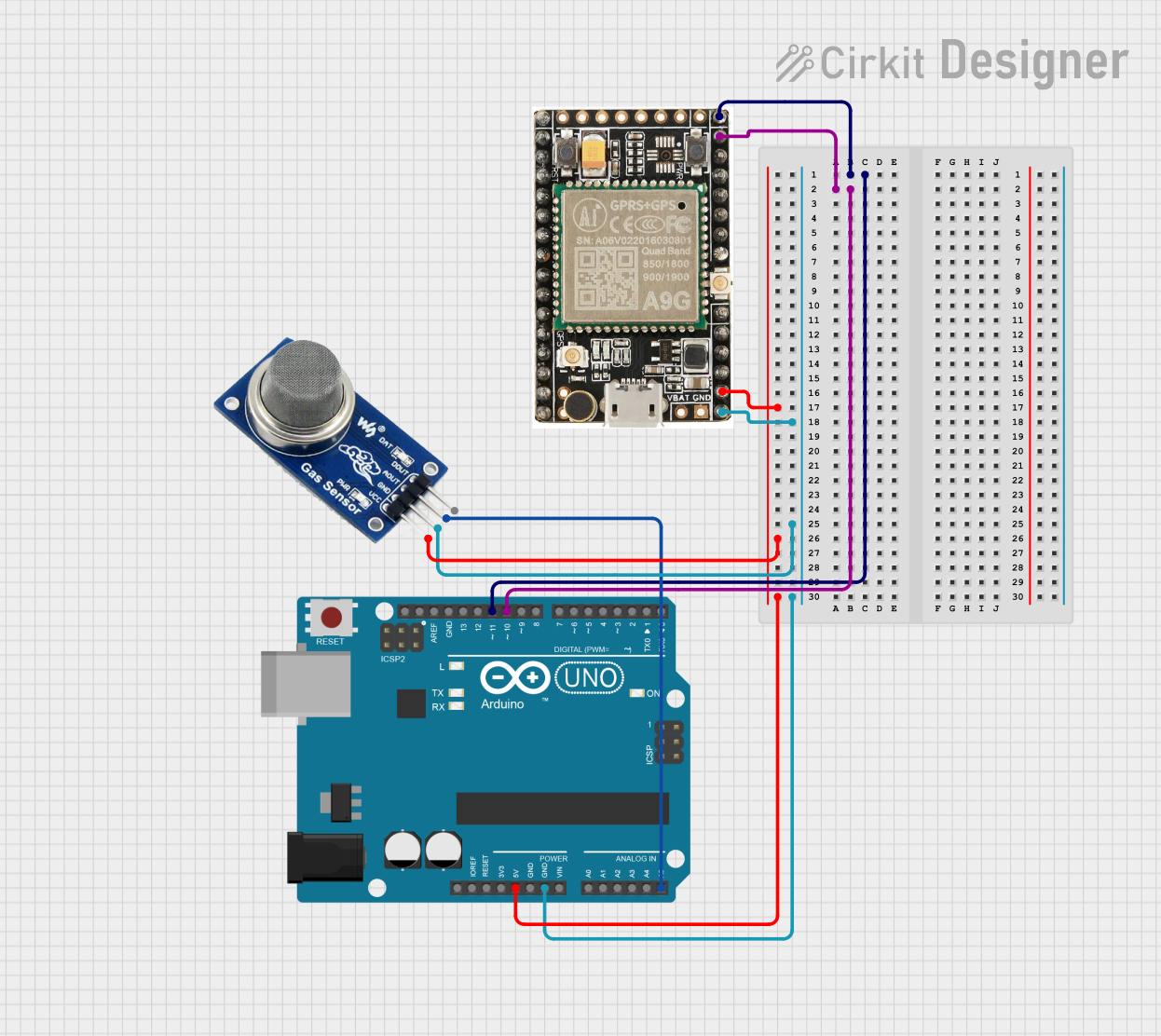
 Open Project in Cirkit Designer
Open Project in Cirkit Designer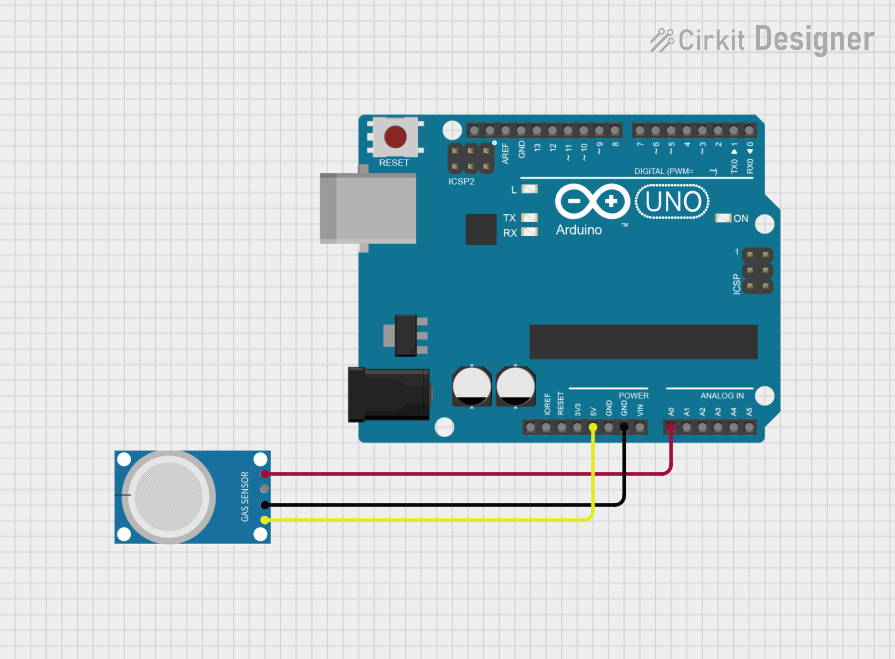
 Open Project in Cirkit Designer
Open Project in Cirkit Designer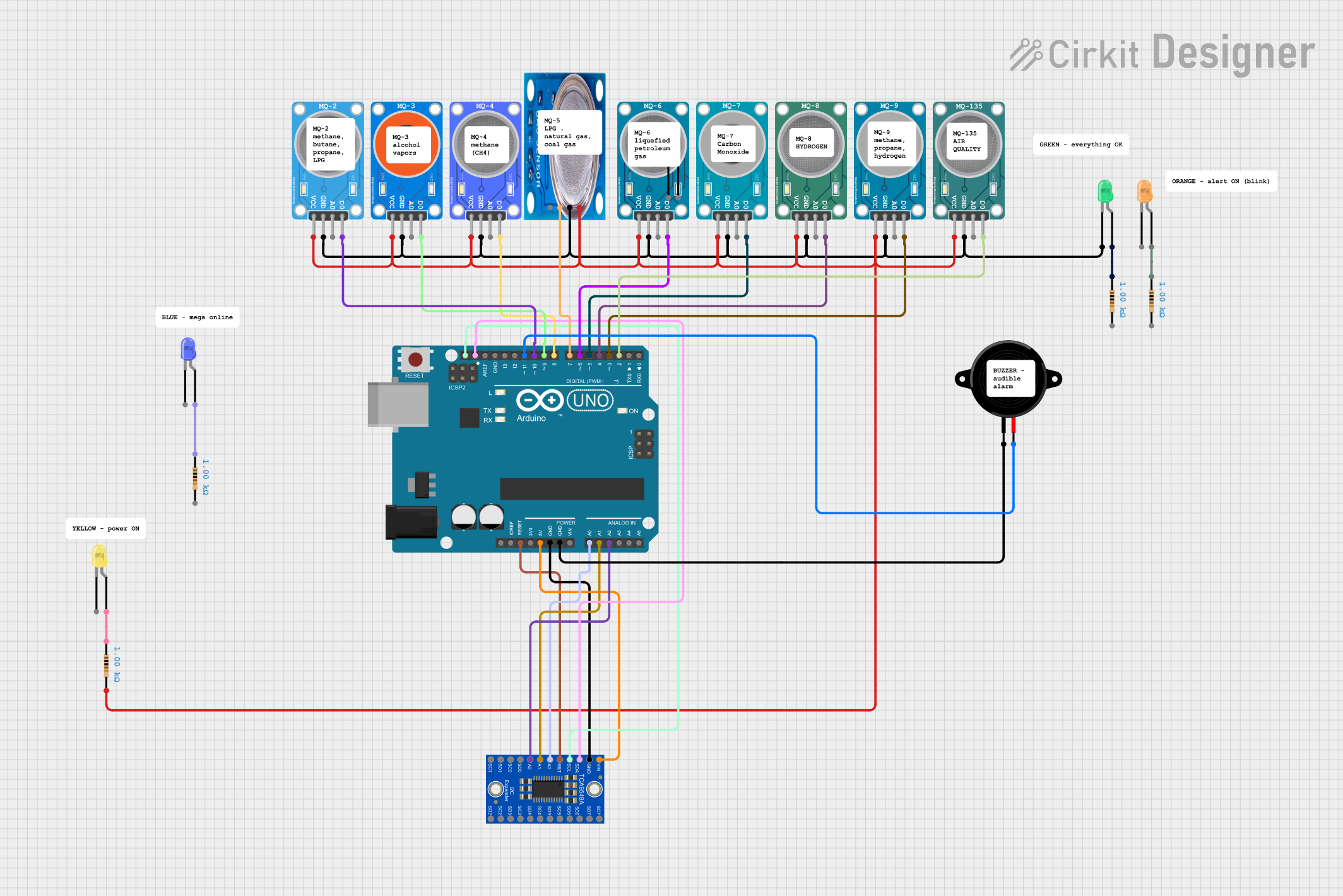
 Open Project in Cirkit Designer
Open Project in Cirkit Designer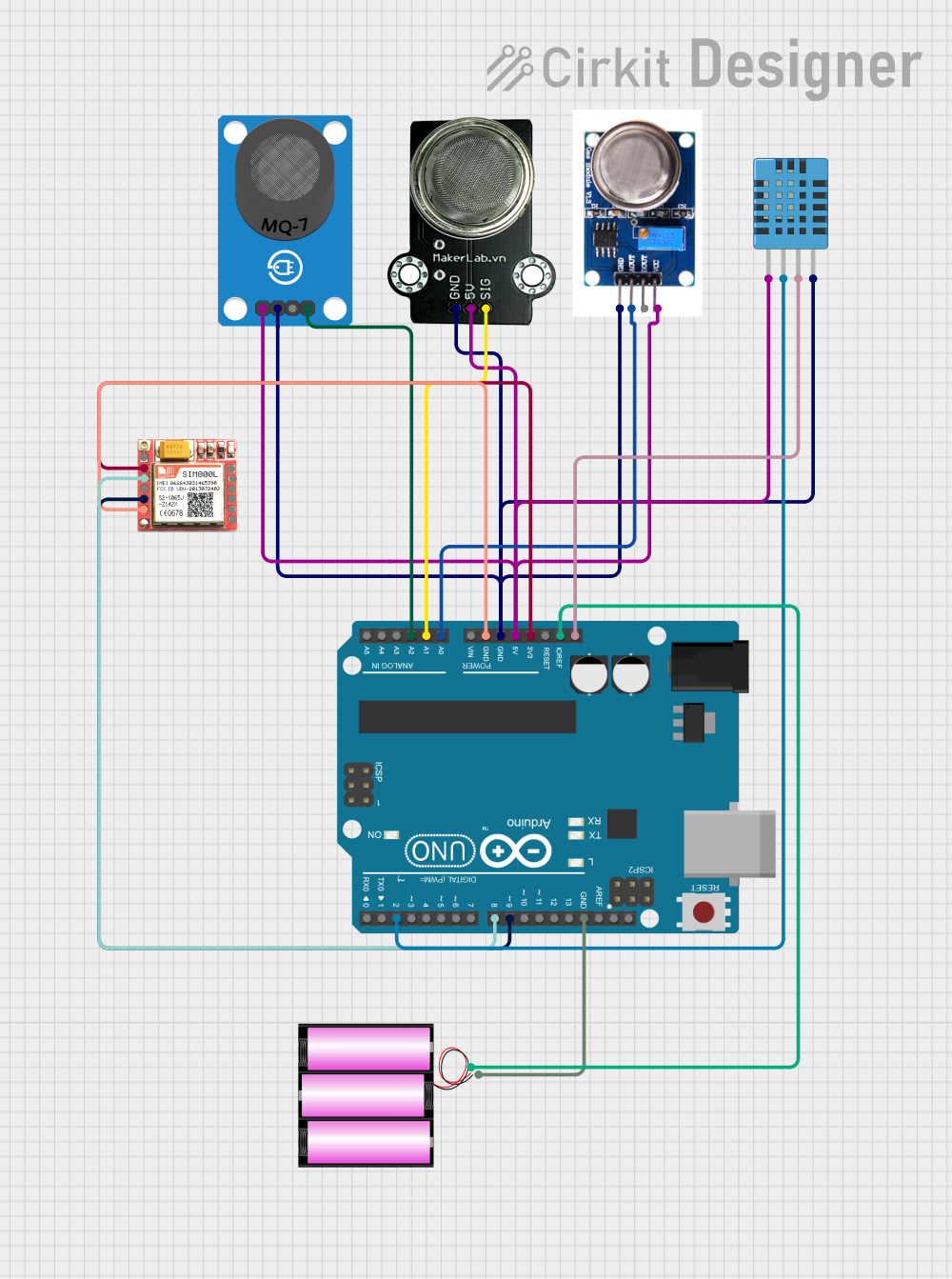
 Open Project in Cirkit Designer
Open Project in Cirkit DesignerExplore Projects Built with MQ-4

 Open Project in Cirkit Designer
Open Project in Cirkit Designer
 Open Project in Cirkit Designer
Open Project in Cirkit Designer
 Open Project in Cirkit Designer
Open Project in Cirkit Designer
 Open Project in Cirkit Designer
Open Project in Cirkit DesignerCommon Applications
- Gas leak detection in residential and industrial environments
- Methane monitoring in mining and oil industries
- Environmental air quality monitoring
- Smart home safety systems
- IoT-based gas detection systems
Technical Specifications
The MQ-4 sensor is designed for ease of use and integration into various electronic systems. Below are its key technical details:
| Parameter | Value |
|---|---|
| Operating Voltage | 5V DC |
| Load Resistance (RL) | Adjustable (typically 10 kΩ) |
| Heater Voltage (VH) | 5V ± 0.2V |
| Power Consumption | ≤ 800 mW |
| Detection Range | 200 ppm to 10,000 ppm (CH₄) |
| Preheat Time | ≥ 24 hours for optimal accuracy |
| Output Signal | Analog voltage (0-5V) |
| Operating Temperature | -20°C to 50°C |
| Humidity Range | 33% to 95% RH |
| Sensor Life Span | ≥ 5 years |
Pin Configuration and Descriptions
The MQ-4 sensor typically comes with four pins or terminals. Below is the pinout description:
| Pin Name | Description |
|---|---|
| VCC | Power supply pin (5V DC) |
| GND | Ground connection |
| AOUT | Analog output signal proportional to gas concentration |
| DOUT | Digital output (threshold-based signal, optional) |
Usage Instructions
The MQ-4 gas sensor is straightforward to use in a circuit. Follow the steps below to integrate it into your project:
Circuit Connection
- Power Supply: Connect the VCC pin to a 5V DC power source and the GND pin to ground.
- Analog Output: Connect the AOUT pin to an analog input pin of your microcontroller (e.g., Arduino UNO) to read the gas concentration.
- Digital Output (Optional): If using the DOUT pin, connect it to a digital input pin of your microcontroller. Adjust the onboard potentiometer to set the gas concentration threshold for the digital output.
Important Considerations
- Preheating: Allow the sensor to preheat for at least 24 hours before taking accurate measurements. This ensures the internal heater stabilizes.
- Calibration: For precise measurements, calibrate the sensor in a known gas concentration environment.
- Ventilation: Ensure proper ventilation around the sensor to avoid saturation and improve response time.
- Load Resistor: Use a load resistor (RL) of 10 kΩ for typical applications. Adjust as needed for your specific use case.
Example Code for Arduino UNO
Below is an example of how to use the MQ-4 sensor with an Arduino UNO to read analog values:
// MQ-4 Gas Sensor Example Code
// This code reads the analog output of the MQ-4 sensor and prints the value
// to the Serial Monitor. Ensure the sensor is connected to the correct pins.
const int MQ4_AOUT_Pin = A0; // Connect AOUT pin of MQ-4 to Arduino analog pin A0
void setup() {
Serial.begin(9600); // Initialize serial communication at 9600 baud
pinMode(MQ4_AOUT_Pin, INPUT); // Set the AOUT pin as input
}
void loop() {
int sensorValue = analogRead(MQ4_AOUT_Pin); // Read the analog value from MQ-4
float voltage = sensorValue * (5.0 / 1023.0); // Convert to voltage (0-5V range)
// Print the sensor value and voltage to the Serial Monitor
Serial.print("Sensor Value: ");
Serial.print(sensorValue);
Serial.print(" | Voltage: ");
Serial.print(voltage);
Serial.println(" V");
delay(1000); // Wait for 1 second before the next reading
}
Best Practices
- Avoid exposing the sensor to high concentrations of corrosive gases, as this may damage the sensing element.
- Place the sensor in a stable environment to minimize noise and fluctuations in readings.
- Use a decoupling capacitor (e.g., 0.1 µF) between VCC and GND to reduce power supply noise.
Troubleshooting and FAQs
Common Issues and Solutions
| Issue | Possible Cause | Solution |
|---|---|---|
| No output signal | Incorrect wiring or power supply issue | Verify connections and ensure 5V power |
| Unstable or fluctuating readings | Insufficient preheating time | Allow the sensor to preheat for 24 hours |
| Low sensitivity to methane | Calibration not performed | Calibrate the sensor in a known gas environment |
| Sensor not responding to gas presence | Sensor damaged or expired | Replace the sensor if it has exceeded its lifespan |
FAQs
How long does the MQ-4 sensor last?
- The sensor has a typical lifespan of 5 years under normal operating conditions.
Can the MQ-4 detect gases other than methane?
- While optimized for methane, the MQ-4 may respond to other combustible gases, but with reduced accuracy.
Why is preheating necessary?
- Preheating stabilizes the internal heater and ensures accurate and consistent readings.
Can I use the MQ-4 with a 3.3V microcontroller?
- The MQ-4 requires a 5V power supply for the heater. Use a level shifter or voltage divider for compatibility with 3.3V systems.
By following this documentation, you can effectively integrate the MQ-4 gas sensor into your projects for reliable methane and natural gas detection.